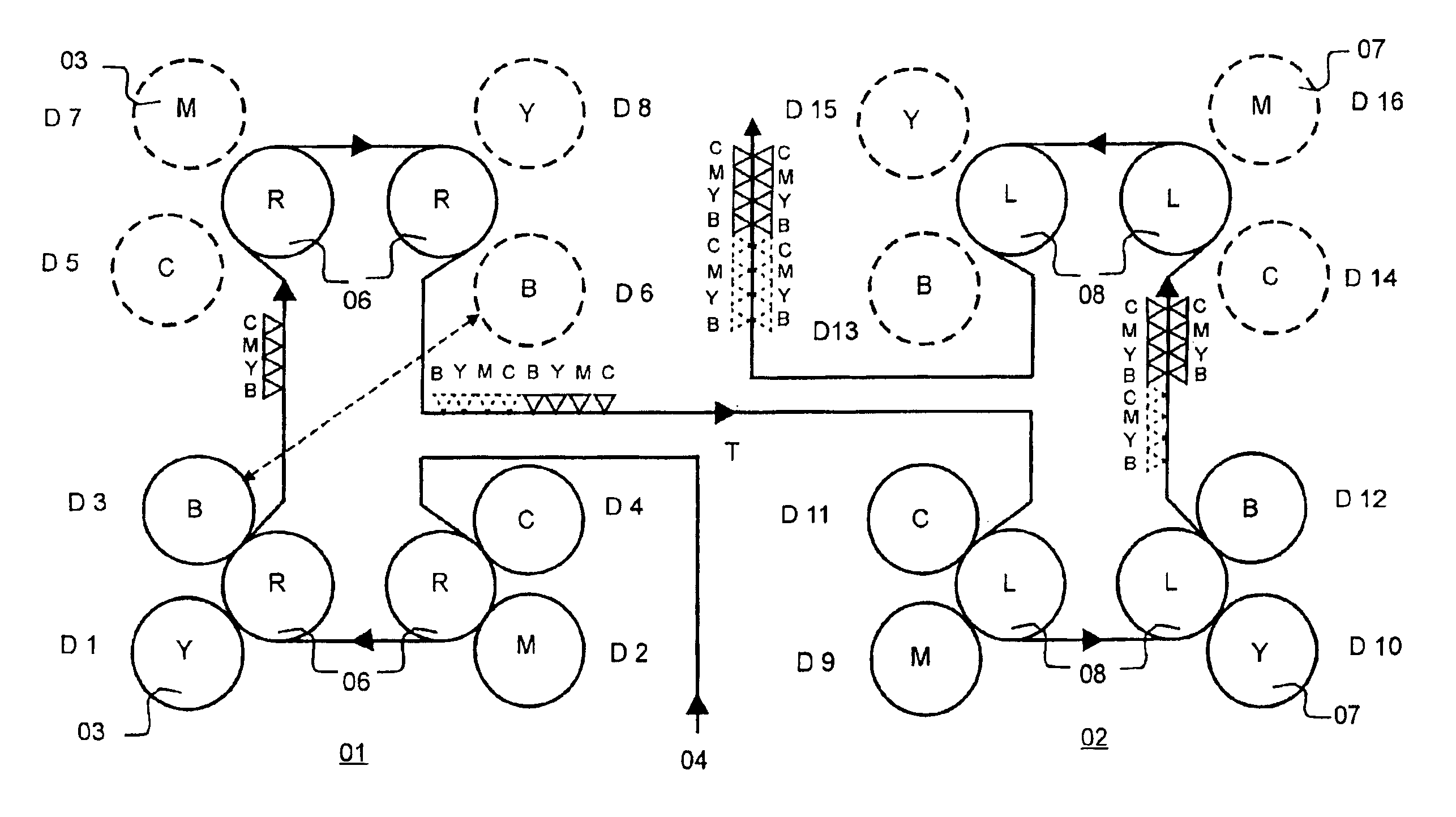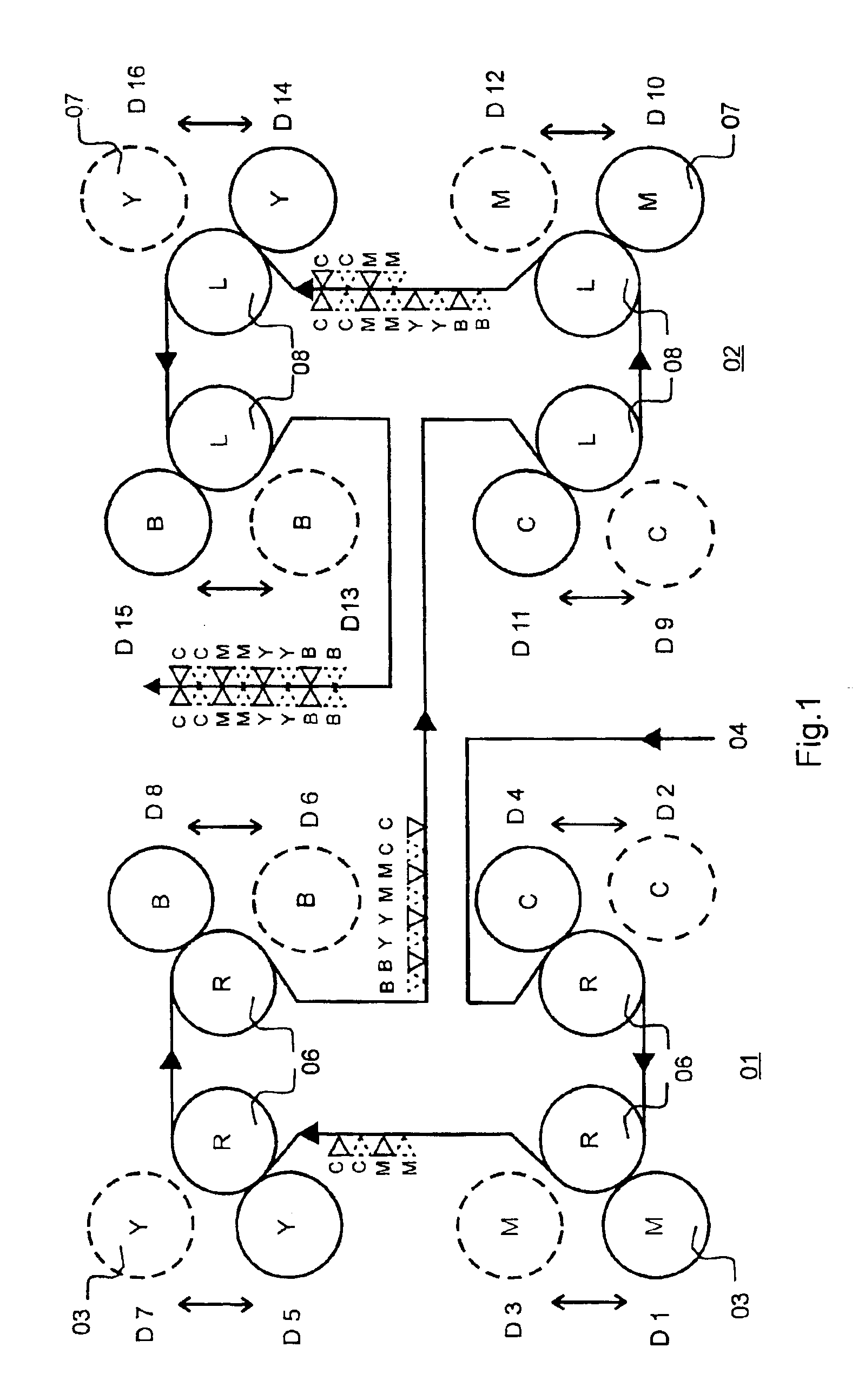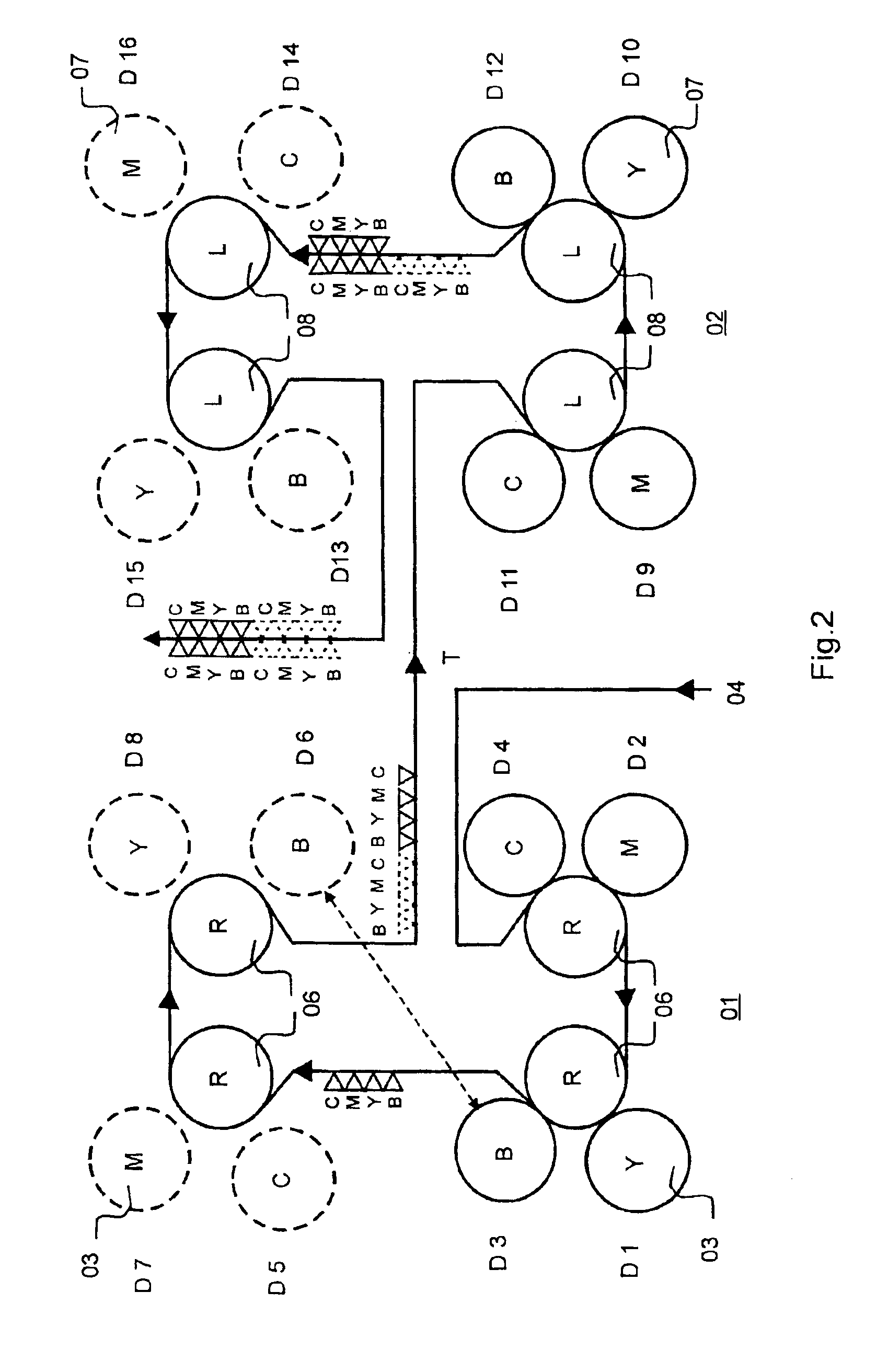Web-fed rotary press
- Summary
- Abstract
- Description
- Claims
- Application Information
AI Technical Summary
Benefits of technology
Problems solved by technology
Method used
Image
Examples
first embodiment
[0036]However, in this second preferred embodiment the two print positions D1, D2, D3, D4, D5, D6, D7, D8, D9, D10, D11, D12, D13, D14, D15, D16, respectively which are provided with the same colored ink in each printing tower 01, 02, and which can be alternatingly placed into and out of operation, are not arranged directly adjoining and working together with the same satellite cylinder 06, 08 as was the case in the Instead, they are arranged, within their respective printing tower 01 or 02, in a diagonally mirror-like way which is indicated in FIG. 2 by the use of a dashed arrow, as seen in the first printing unit unit 01. In the depicted second preferred embodiment, the print positions D1 and D8 in the first printing tower 01, and the print positions D10 and D15 in the second printing tower 02 contain the color yellow Y. The print positions D2 and D7 in the first printing tower 01 and the print positions D9 and D16 in the second printing tower 02 contain the color magenta M. The ...
third embodiment
[0042]In this preferred embodiment, the printing groups D1, D2, D3, D4, D5, D6, D7, D8, D9, D10, D11, D12, D13, D14, D15, D16, each with one colored ink, and which alternatingly work together with the same side of the paper web 04, are respectively located within a unit 01 or 02. The maximum distance between these two printing groups D1, D2, D3, D4, D5, D6, D7, D8, D9, D10, D11, D12, D13, D14, D15, D16 is less than half the length of the paper web 04 from the first to the last print position D4, D2, D1, D3, D5, D7, D8, D6, D11, D9, D10, D12, D14, D16, D15, D13. The local distribution of moisture is uniform for both modes of operation. Also in the third embodiment, the distance between the first and the last of the printing groups, for example D4 and D16, or D1 and D13, which are in the contacted position, is greater in both modes of operation of the imprinter operation than half the distance between the first and the last printing groups D4, D2, D1, D3, D5, D7, D8, D6, D11, D9, D10,...
PUM
 Login to View More
Login to View More Abstract
Description
Claims
Application Information
 Login to View More
Login to View More - R&D
- Intellectual Property
- Life Sciences
- Materials
- Tech Scout
- Unparalleled Data Quality
- Higher Quality Content
- 60% Fewer Hallucinations
Browse by: Latest US Patents, China's latest patents, Technical Efficacy Thesaurus, Application Domain, Technology Topic, Popular Technical Reports.
© 2025 PatSnap. All rights reserved.Legal|Privacy policy|Modern Slavery Act Transparency Statement|Sitemap|About US| Contact US: help@patsnap.com



